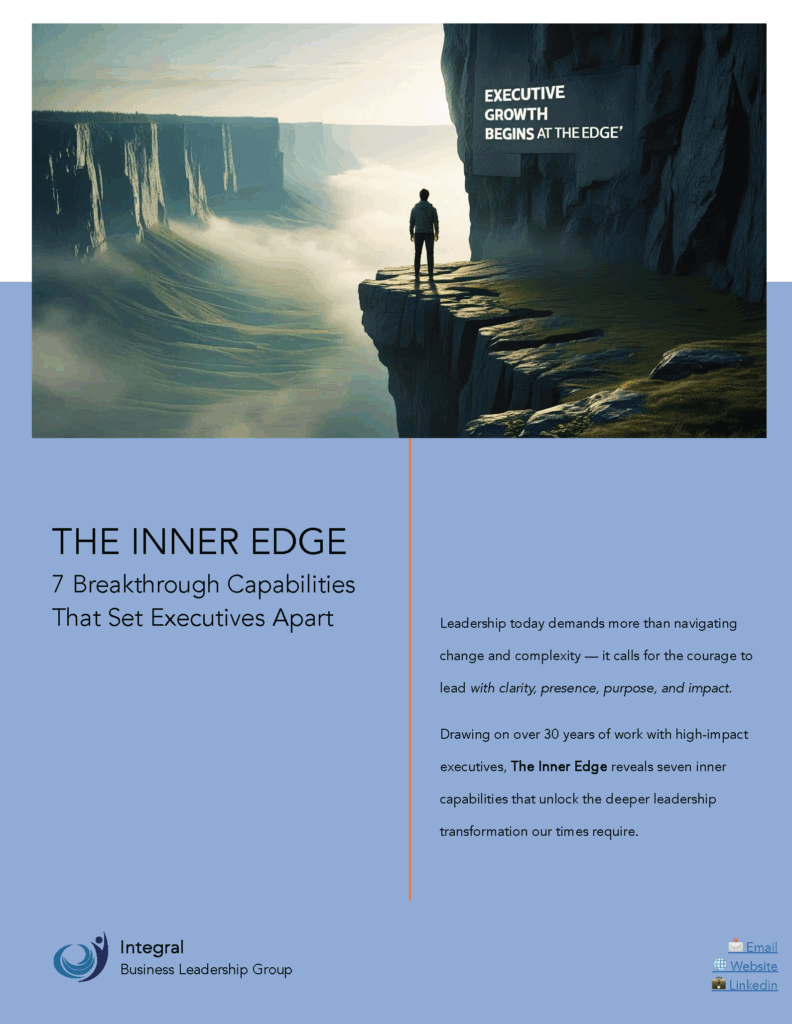This reflection comes from a recent conversation I had with a leader—disappointed, confused, and asking the question many high-performers eventually face:
“I’ve done everything right. So why wasn’t I chosen for the executive role?”
I’ve heard this scenario countless times. It’s common, especially among those ready to step into senior leadership. And it reveals a deeper truth about the kind of leadership that’s actually required at the top.
The Situation
I’ve always been a high-achiever.
And by all accounts, I was ready.
I had the results. The experience. The track record. The respect.
So when I applied for a senior leadership role, I truly believed I had earned my place.
But I wasn’t selected.
I leaned into the discomfort and asked for feedback. What I heard was both surprising—and illuminating:
“You’re technically excellent.
But at this level… it’s about how you show up.
We need someone who stays grounded under pressure.
Who leads with calm in conflict.
Who can hold multiple priorities and perspectives without losing clarity.”
The Realization
“What got me here won’t take me there”.
That feedback landed hard. Not because it was unfair—but because it was true.
It wasn’t about working harder. Or learning more.
It was about leading differently.
Where my skills ended… my presence needed to begin.
That’s when I saw it: I’d reached the edge of my current leadership identity.
The Hidden Barrier No One Talks About
Many experienced leaders eventually hit a point where the path forward becomes… unclear.
Not because they aren’t capable—but because the game changes.
At the executive level, success isn’t measured by output alone. It’s measured by:
- How you hold yourself under pressure
- How you navigate conflict without being reactive
- How grounded, clear, and centered you are in the face of uncertainty
These aren’t tactical skills.
They’re internal capacities.
And they can’t be learned through another workshop or book.
They have to be cultivated—intentionally, from within.
You Might Recognize This If …
- You’ve been told to “show up differently,” but no one told you how
- You over-prepare and still feel like you’re not being seen for your potential
- You’re used to solving problems—but now, you’re expected to hold space for others to do the same
- You know you’re capable—but something deeper needs to shift
This isn’t a knowledge gap.
This is a leadership evolution.
The Good News …
This moment isn’t a wall.
It’s a doorway.
It means you’re ready to lead from a deeper, more integrated place.
It means you’re ready to shift from proving your value…
To embodying your presence.
To lead not just through expertise, but through who you are—especially when the room gets tense.
You don’t need more hustle.
You need space. Support. And the right kind of guidance to grow into the leader you’re becoming.
Let’s Talk.
If any of this resonates—if you’re standing at the edge of what’s next and want support in making the leap—reach out.
#LeadershipEvolution #ExecutivePresence #LeadershipDevelopment #ConsciousLeadership #LeadershipGrowth #BreakthroughLeadership #MidCareerLeaders #LeadershipJourney #InnerWork



 Your Dreams & Wants – We get to know you. How you are standing at this important crossroad in your career and life. What your vision is for the future of the company as well as what is next for you personally and lay out a path for making it happen.
Your Dreams & Wants – We get to know you. How you are standing at this important crossroad in your career and life. What your vision is for the future of the company as well as what is next for you personally and lay out a path for making it happen.